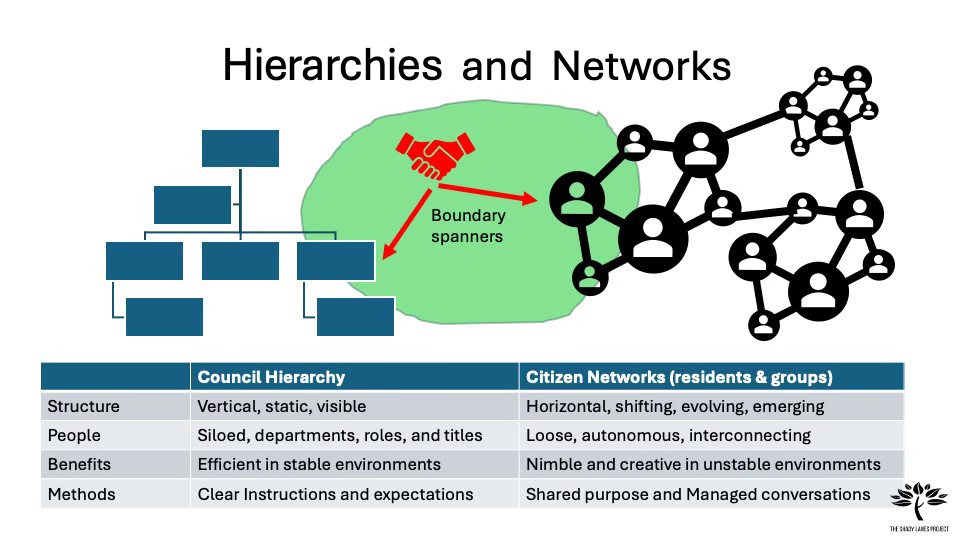Hierarchies and Networks
The structure that you choose affects the way you operate, and what you and others can expect of your group.
This is part of our session for the online day at Global Donut Days 2024.
See the recording and slides here.
Our businesses and organisations are usually structured as hierarchies.
But loose networks and collaborations are the key to change and innovation.
In The Shady Lane Project, I use this slide to explain the difference between the councils (which are hierarchical and siloed organisations) and the networks of residents who want to plant out the verge in front of their homes. There is a clash of imperatives, responsibilities, and operating styles but we have to learn to work together in order to transform our barren streetscapes into into shady, biodiverse, walkable corridors. (see post)
Neither form of organisation is best. We need both depending on what they are meant to do.
A Council run as a network would be chaos, you’d never get your bins emptied or anything else done.
We need boundary-spanners between hierarchies and networks who can link the two ways of operating and form the good relationships, or chains of relationships, and trust needed for innovative collaborations.
This diagram shows the extremes - there can also be small networks and boundary-spanners within hierarchical organisations and some community groups can be very hierarchical in nature.
The green area is where innovation happens with diverse people who can bridge the gaps and find innovative and creative solutions that neither type of organisation could do alone.
The structure that you choose affects the way you operate, and what you and others can expect of your group.
So, Regen Brisbane was created intentionally as a loose network, or at best a virtual organisation, because we want to be innovative and create positive change in our region. Some members of our group are boundary-spanners with connections in diverse organisations and disciplines.
Strategic Doing is a proven methodology for managing loose networks for innovation and change, and so is a vital part of our toolkit.
Next Slide: Vital Role of Internet Communications Technology (ICT)


